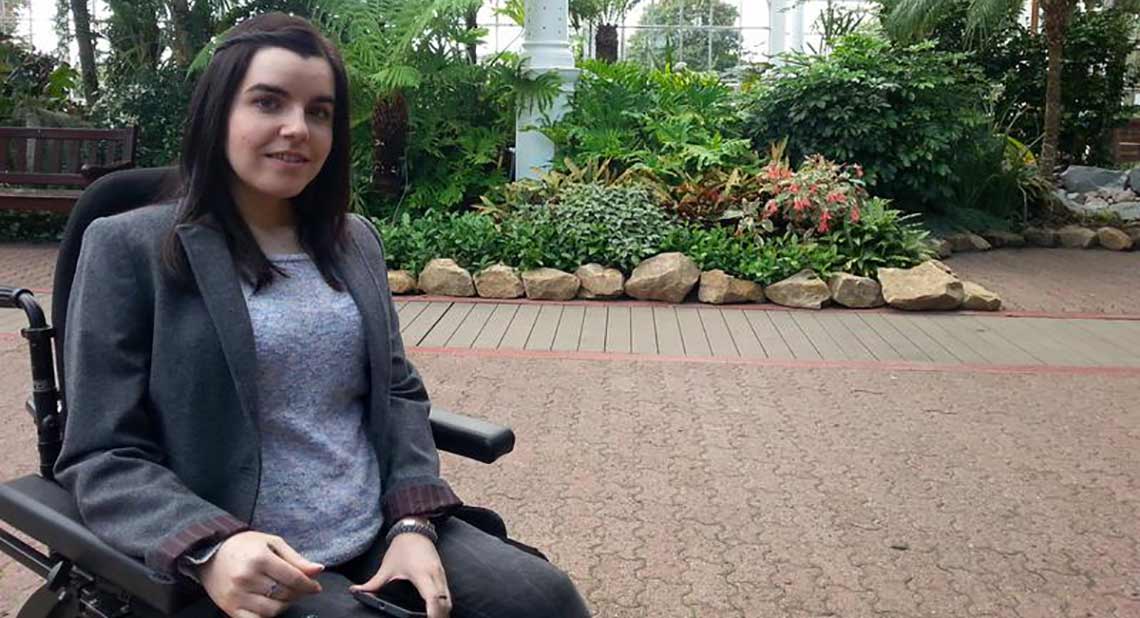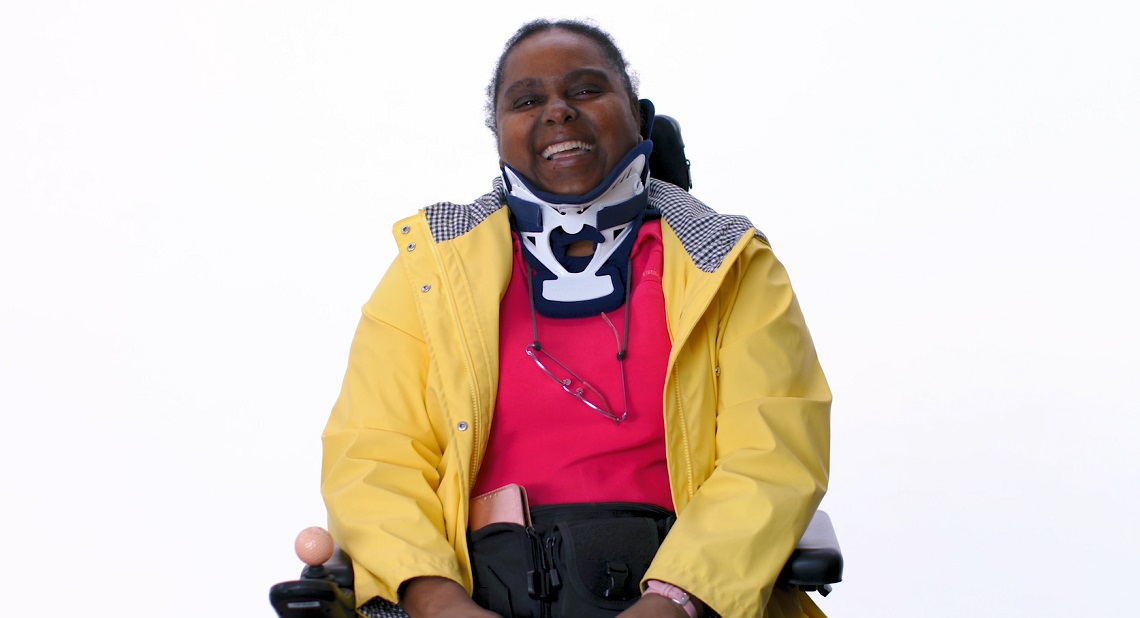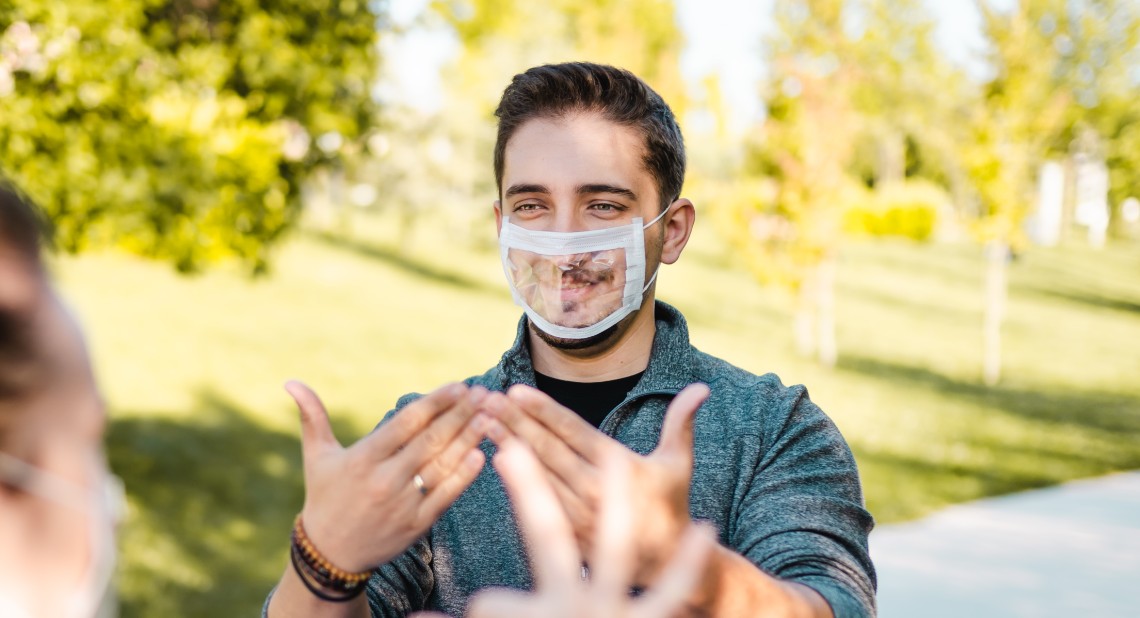Adjusting to university life can be difficult for any student, and can come with additional challenges for those with disabilities. From lecture theatres being crowded and noisy, to being away from the daily support of parents, there are a variety of obstacles to contend with. This article from the Guardian showcases some of the best tech initiatives which help students who need extra support to study and enjoy university life.
Rustling crisp packets, shuffling feet and the general buzz of conversation made lectures a trial for Gemma Long during her first degree. She suffers from sensory overload connected to her autism, which was only diagnosed after she graduated. But when she started a teacher-training course at the University of Huddersfield, she received access to software to help her cope with dyslexia and found it transformative. It allowed her to listen to lectures quietly at home, which dramatically improved her grades. She went on to take an MA at the Open University and is now studying for a PhD at Sheffield Hallam University.
“I struggled to understand the point of lectures until I got that software,” recalls Long. “I didn’t realise how much useful information was in them. As someone who is hypersensitive to noise I spend most of my time in lectures trying to filter out the background noise, which means I miss much of what the lecturer is saying. Being able to audio record the lectures and listen back to them in a silent room meant I was finally able to digest the content.”
Technology is breaking down barriers faced by students with disabilities. This matters, because fewer disabled students go to university than their non-disabled peers. Online journal articles or reading lists now mean that those with visual impairments can zoom in to read printed text or convert it to easier-to-read formats such as braille. Universities are also increasingly recording lectures which students can replay at their own pace, which benefits students with dyslexia or attention deficit disorder (ADHD) too. Often, all this can be done through laptops at home, giving disabled students greater independence.
According to Alistair McNaught, a digital learning consultant, universities are increasingly tracking how students learn, and then directing them to the accessible resources most suited to their personal needs. Staff can also receive automated feedback on the accessibility or otherwise of material they upload to the virtual learning environment.
McNaught appreciates the way assistive technologies can help all students – whether they have a disability or not – but stresses that it’s important for universities to get the basics right first. “Many higher and further institutions have inaccessible websites or inaccessible digital content. If the content is inaccessible, investments in assistive technology can be undermined at a stroke.”
This is something that new European regulations aim to tackle. After September this year, new material published on university websites and virtual learning environments will need to meet standards on accessibility.
This drive is complemented by other technological innovations. There are new mobile apps to guide students through tricky periods or situations. For instance, Brain in Hand is designed specifically for people with autism, mental health conditions, brain injuries or specific learning difficulties. It suggests personalised coping strategies to students in distress, offers reminders about tasks, and allows them to monitor anxiety levels and access help swiftly when needed.
Some universities are taking a wider approach. At De Montfort University, around 200 students can record their moods via a traffic light system – green when all is OK, amber when they are feeling uncomfortable, and red when they need help. Specialist mentors track these notifications and step in when needed, as well as observing what activities seem to cause each student particular stress. For example, many students seem to record high anxiety levels on Wednesday afternoons, which have traditionally been left free, so the university now offers drop-in sessions on those days.
Universities are feeling the pressure to improve accessibility after the government reduced funds for Disabled Student Allowances in 2016-17. Universities were given more money to persuade them to “create a more inclusive learning environment” overall, rather than focus on targeted support for individuals.
But although disability campaigners have broadly welcomed this, they point to some problems. Piers Wilkinson, head of Ramping Up, a consultancy on accessibility in higher education and disabled students officer elect at the National Union of Students, says that a general inclusive approach can be helpful in identifying that a particular style of teaching or assessment does not work for all students, not just their disabled peers. But he argues that although it’s important, universities still need to provide targeted support for disabled students.
Furthermore, analysis by Policy Connect, a cross-party thinktank, shows the number of students receiving technology equipment through DSA has dropped since the £200 charge for DSA-issued laptops came in, despite a substantial increase in the number being assessed as needing support. It is putting together a report, due out in the next few weeks, which is expected to recommend removing these upfront costs.
Rachel Hewett, fellow in the Vision Impairment Centre for Teaching and Research at the University of Birmingham, adds that even when students receive laptops the fact they are issued by the DSA can make them unsuitable. “Once they have put on all the different software they need and are trying to run them in conjunction with other laptops they aren’t powerful enough,” she says. Many students struggle to use the equipment as they aren’t given any training, either.
Hewett would like to see the DSA fund mainstream technology such as iPads, which increasingly include features such as braille-writing capability. Getting used to mainstream technology would also be more helpful to students long term, she argues.
For Long, universities just need to get better at promoting the support that’s already there. She says that making specialist software and training generally available, rather than confining it to disabled students, makes it more widely known, as well as removes stigma. For someone like her, who received her diagnoses late, it would have been particularly helpful. To this end, the assistive technology network she founded to represent staff who support their disabled students with tech, will hold its first awards ceremony next month.
Universities are slowly tackling the barriers for disabled students, helped along by developments in technology. There’s more yet to come: Wilkinson is excited about the prospect of virtual reality – particularly when it comes to fieldwork. “It can be incredibly difficult for a disabled student to get a wheelchair on to a salt marsh,” he says. “But if the learning aims are being immersed in an environment, and making discoveries, VR can achieve that.”
This article was written by Harriet Swain from The Guardian and was legally licensed through the NewsCred publisher network. Please direct all licensing questions to legal@newscred.com
Related articles
A wheelchair user’s guide to choosing a university
Travelling with a disability: Meet the voyager who’s re-writing the rule book
Model with Down’s Syndrome ‘paving the way for others with disabilities’
![]()







